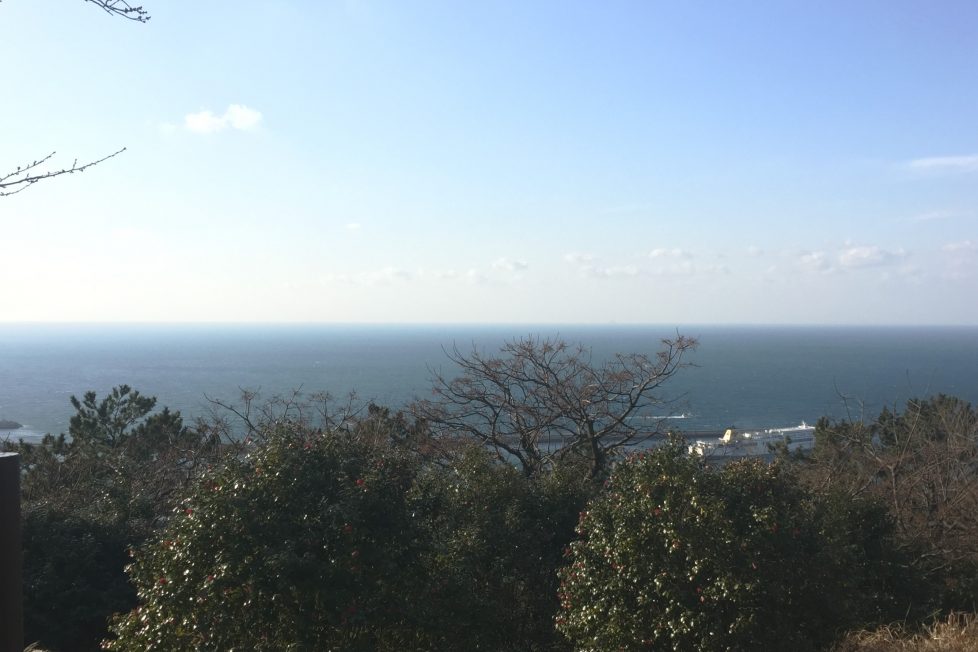Finding An Island Within
How yoga stepped into my life on an island in S. Korea.

‘Don’t be alarmed, she’s having Kundalini.’
Master Han spoke. He must have noticed my startled face when I noticed a woman rolling on her back and laughing maniacally, while everyone else in the room was practicing a bridge posture.
Mostly in comfortable clothes and some in ‘yoga outfit’, people were forming a line from the front of the building, climbing up to the closed door on the 2nd floor before the class. There was no name, website, nor Google map address for this man’s yoga studio on Jeju Island. Yet, typing his name in ‘Naver’(the google of Korea) led me to countless blog reviews of his studio, which was recommended by my old yoga teacher in Seoul. The door finally opened, and people started entering. Unlike other yoga studios I have been to in Seoul or New York, there was no mirror, no yoga mat, nor front desk. Just a green padded floor with the wall shelves full of CDs, books, stacked Pu’er teas, and in the corner was a couple of rabbits in cages. In the other corner sat Master Han – a man with long grey hair and beard – in lotus posture. About 40 students started sitting crossed-legged on the floor, forming four lines.
From the silence, Master Han initiated the class by chanting in Sanskrit. It sounded like a magic spell for me, and he went on by reciting more Sanskrit on us, which were names of yoga poses that were a mystery to me back then. Not moving much from his lotus posture, he only used verbal cues in Sanskrit and Korean with his low-tone voice. Everyone seemed to know what to do except for myself – busy looking to my left and right at other students settled in the pose with their eyes closed. He asked me where I was from, so I responded ‘Seoul’, which became my name during the class. ‘Hey, Seoul, straighten your spine!’
In one row, advanced students held extreme poses that made them look like scenes from Japanese cult comics, while in the other row, some middle-aged men groaned as they were trying to reach their toes with their hands. After the class, some students stayed to form a circle around Master Han, as he was preparing Pu’er tea to share. Most seemed to have great reverence for him. Everything about this place seemed too foreign to me. Is this some type of cult? I questioned myself on returning to the place.
I was eating alone at a local restaurant across the studio a week after that class. When a woman in pink yoga pants and a green coat came in, I asked her if she just came from Han’s yoga. ‘Yes,’ she responded. As I started asking her questions about the yoga studio, we ended up eating together. Soonja – a world traveler and retired school teacher who ended up becoming my best friend – started telling me about Han’s class. ‘No need to feel intimidated by the level of the class. Do you know who else goes to this yoga studio? Ms. Yeonja here!’ Ms. Yeonja, the restaurant owner in her sweet 70s smiled at us.
A few months into Han’s class, I learned that the laughing rolling woman from my first class has OCD, and she wasn’t the only one who had mental conditions. People of all walks of life and backgrounds – farmers, doctors, artists, yoga instructors, taxi drivers, professors, and top celebrities of Korea – came to the studio, sharing breaths, falls(from headstand attempt), accidental farts(from long-held forward-fold), over-produced tangerines, and Pu’er tea. The tea circle could never be so intergenerational and interclass, which is quite rare in Korea. Evening yoga occasionally led to dinner gatherings at Chinese restaurants that involved drinking – his nightly favourite fermented drink being strong sorghum liquor (above 38% alcohol), as his daily favourite fermented drink being Pu’er tea.
He never called himself guru, yet many people asked him for off-the-mat advice. I didn’t become his big worshipper like some others, but his minimalistic style of Hatha yoga with no music, no props, and no demonstration, mostly with closed eyes in the long hold of poses made a strong impact on me, unlike any other yoga classes I’ve taken. He invited us to the essence of yoga which was much greater than a physical practice. What still evokes me to this date is his voice. With the voice of actors in ‘60’s Korean movies, he narrates the steps into the poses with no frills. As he lists the benefits of each pose during the class at a faster pace, he sometimes asks ‘Do I sound like a snake-oil salesman?’ His jokes crack me up.
‘True yogi is the one who can meditate in the hustle and bustle of a market.’
Master Han’s voice came back to my head in Summer 2019 in a noisy street corner of Bushwick in Brooklyn, NY. Having just moved there, I missed everything about the island. Remembering his voice, I continued practicing yoga and took on teacher training at Yogi Hari’s Ashram in Florida. I don’t know if I will ever be able to one day meditate in a market, but I continue my practice on and off the mat, to remind myself that the island I miss is within me. As I close my eyes in a lotus posture every day, I step into the silence within and wait for the voice – not Master Han’s voice, but my own.
1 Comment

Nicely written with an innocent tone. Felt like I was there.